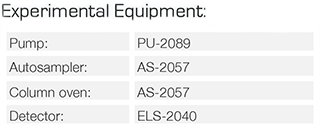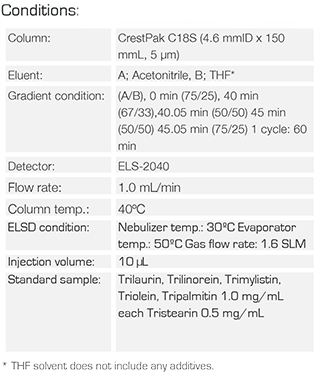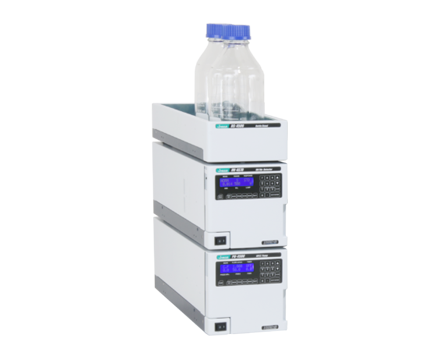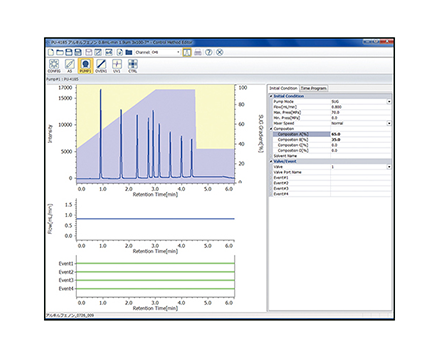Analysis of Triglycerides by High Performance Liquid Chromatography with Evaporative Light Scattering Detection
August 19, 2022
Introduction
Although triglycerides function as an energy source, it is recognized that too much intake may cause arteriosclerosis. Since most of components in triglycerides have almost no UV absorption, a differential refractive index detector is often used fortriglycerides analysis. With this detector, however, it takes a long time to stabilize the baseline and foreign substances often affect the results. ELSDis known as an effective detection method to solve the problems on fatty analysis including triglycerides, taking advantage of its high sensitivity and stable baseline.

Experimental


Results
Figure 1 shows the chromatogram of 6 well separated components of a triglycerides standard mixture.

Figure 2 and Figure 3 show the chromatograms of rice bran oil and margarine, respectively.


Featured Products:

Analysis of Triglycerides by High Performance Liquid Chromatography with Evaporative Light Scattering Detection
Introduction
Although triglycerides function as an energy source, it is recognized that too much intake may cause arteriosclerosis. Since most of components in triglycerides have almost no UV absorption, a differential refractive index detector is often used fortriglycerides analysis. With this detector, however, it takes a long time to stabilize the baseline and foreign substances often affect the results. ELSDis known as an effective detection method to solve the problems on fatty analysis including triglycerides, taking advantage of its high sensitivity and stable baseline.

Experimental


Results
Figure 1 shows the chromatogram of 6 well separated components of a triglycerides standard mixture.

Figure 2 and Figure 3 show the chromatograms of rice bran oil and margarine, respectively.



 Download This Application
Download This Application

